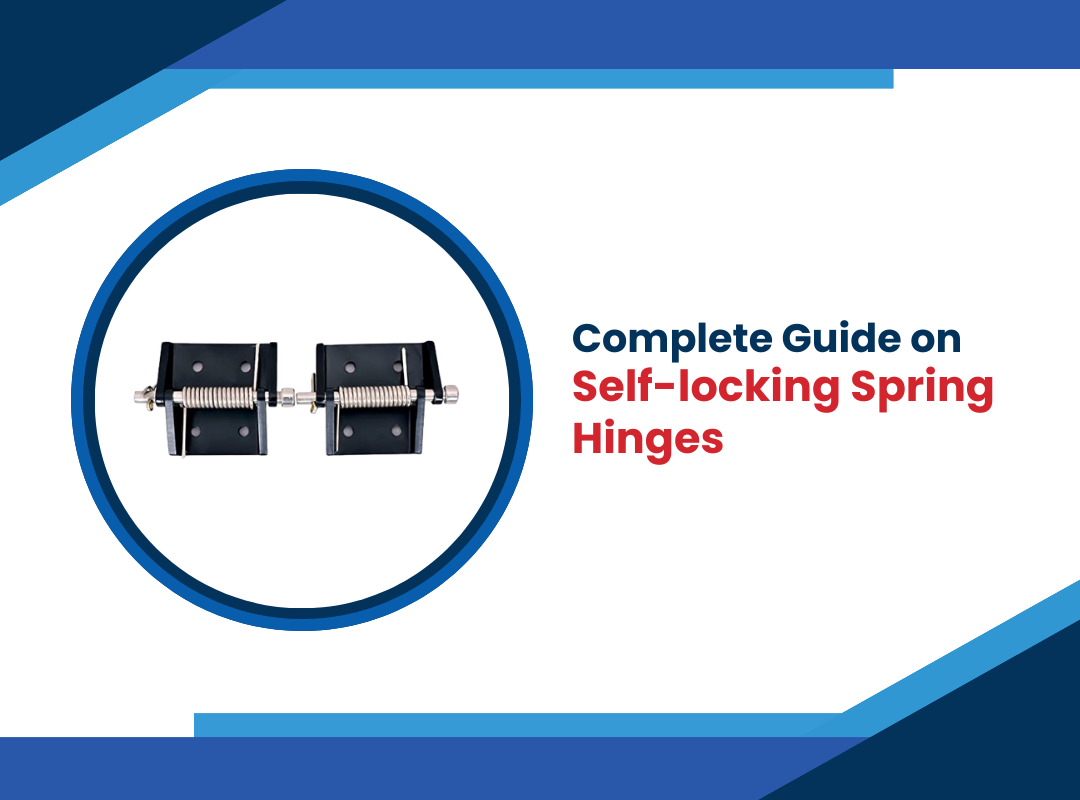Did you hear before of self-locking hinges? Self-Hinges has used to connect two objects while one is allowed to rotate. You can find these hinges on furniture, doors and gates. These hinges are different from other hinges.
Self-locking spring hinges are gaining popularity among those who want to upgrade their house’s overall aesthetics and functionality. Those who require peace can opt for self-locking hinges. These hinges come in various sizes, designs and finishes that will enhance the complete impression of your doors. Generally, these hinges have used in the kitchen for cabinets, and you need to use the right kind of hinges to develop your dream kitchen. Please keep reading to understand self-locking spring things and their workings better.
What are Self-Locking Spring Hinges?
As per their name, self-closing hinges close automatically. As per mentioned before, hinges let objects turn. You can quickly turn a hinge-connected door. Depending on which type of hinge door is connected, it may or may not close automatically. If it’s connected with traditional hinges, it remains open until you can close the door. On the other, the door is connected with self-locking spring hinges that close automatically.
Commonly hinges are used to connect doors, but it also used to connect other objects. They can attach gates, panels and other solid things. Hinges are that part of hardware which does not require routine replacement.
Self-locking hinges supported by hydraulic functionality make the door close gently every time. It is the best solution for those who prefer to avoid the sound of doors they create while closing.
It is also the best investment in managing children at home. The doors connected with self-locking hinges are closed gently and slowly. It eliminates the risk of injuries to your kids and creates a safe environment.
How Self-Locking Spring Hinges Work?
Most self-locking spring hinges only apply a small force that pulls the object back to the default or closed position. It has two leaves that are joined together to create a knuckle. The knuckle is spring-loaded. Another type of ring only has a pin in its knuckle. On the other hand, self-locking hinges have a spring in their knuckle that helps pull and close objects.
Self-locking hinges can close automatically by utilising a spring. They have a spring joint with a knuckle that pulls the connected object. When you open the door associated with these, hinge the spring stretches. When spring stretches, it creates pressure. Then self-locking hinges pull the door back to close automatically because the spring is trying to relieve pressure. These hinges are available in other layouts. But most of them depend on a spring.
Conclusion
Hinges are categorized as self-closing if they close automatically. Most of them are connected with a knuckle. The spring stretched because the connected object rotated. In this response, self-locking hinges pull back the thing at default or closing position. As they are a necessary component of doors, hinges are required to work efficiently. Hinges have different functionality and work in different scenarios.


